The 10 Best Immersive Sims Ever
April 26, 2019 | 16:00
Companies: #arkane-studios #bethesda-softworks #io-interactive #irrational-games #looking-glass-studios #square-enix

'Immersive sim' is a terrible name for a collection of some the most critically acclaimed PC games. Beginning with 1992’s Ultima Underworld, immersive sims started out as a particular branch of RPG that focus on creative problem solving through taking advantage of dynamic systems rather than, say, character stats. The concept was largely pioneered by Looking Glass Studios through games like System Shock and Thief, reaching its early zenith with Ion Storm’s Deus Ex.
Many of my favourite games are immersive sims, but compiling this list was an interesting challenge, as it’s becoming increasingly difficult to define what “counts” as an immersive sim. Over the last 10 to 15 years, games from all manner of other genres have adopted the ideas spearheaded by Looking Glass and Ion Storm, bringing elements like skill-trees, stealth dynamic AI, choice-based play, and life simulation into first-person shooters and open-world games. You could probably make the case that Skyrim is an immersive sim, as well as games like S.T.A.L.K.E.R. and even Breath of the Wild.
For this list, I’ve decided to keep the definitions relatively strict, so you’ll see plenty of classics on here. But I have added a couple of more debatable examples that are simply too excellent to ignore.
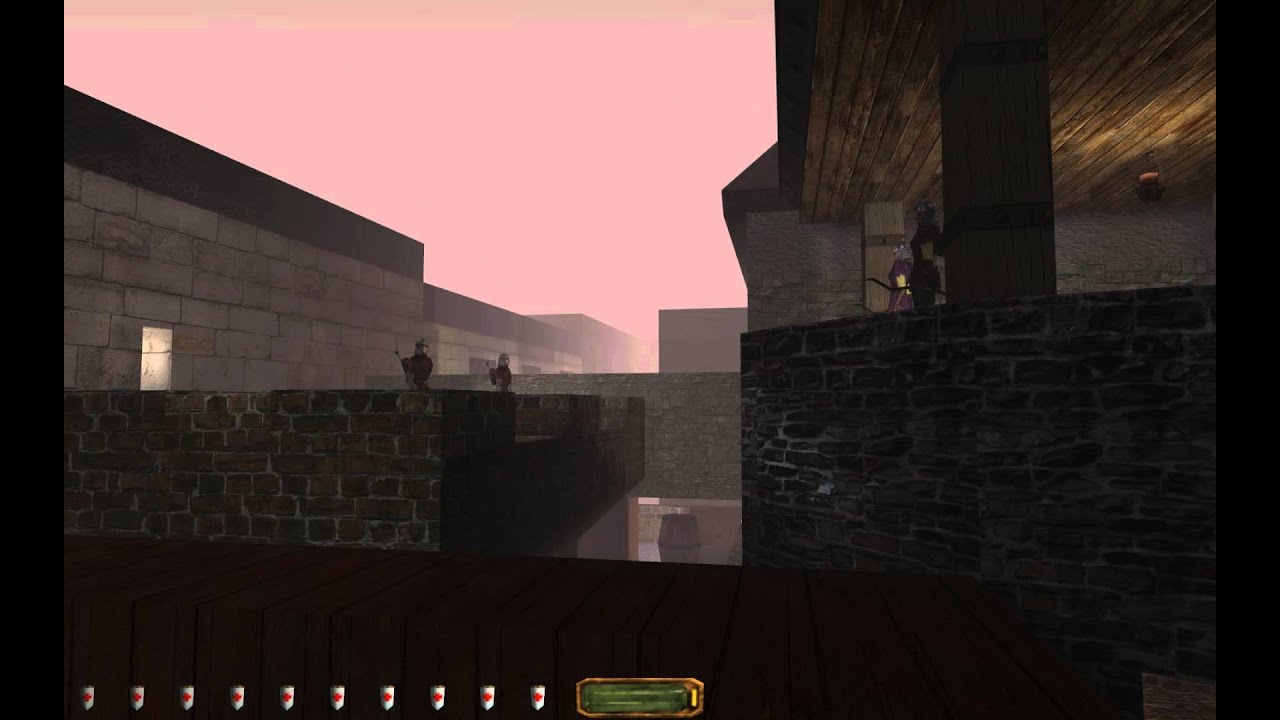
10. Thief II: The Metal Age
Combined, the Thief trilogy is probably my favourite series of games. Twenty years on, they remain some of the most well-written, atmospheric and terrifying games in existence, while their 3D level blows me away every time I return. I considered leaving them off list, however. Since they’re strictly stealth games, the Thief series doesn’t offer the same breadth of play options compared to most of the other games on this list.
Nonetheless, they are designed with the systems-driven focus that define immersive sims. Thief’s light and audio propagation systems, as well as its definitive AI work, were hugely influential on both stealth games and other immersive sims, most notably Deus Ex and Dishonored. Of the three original Thief games, Thief II offers the most comprehensive burglary experience, with the best collection of levels and the most refined sneaking. In particular, it’s Life of the Party level has become a legendary example of immersive-sim mission design, although other highlights include Framed! Eavesdropping, and First City Bank and Trust.
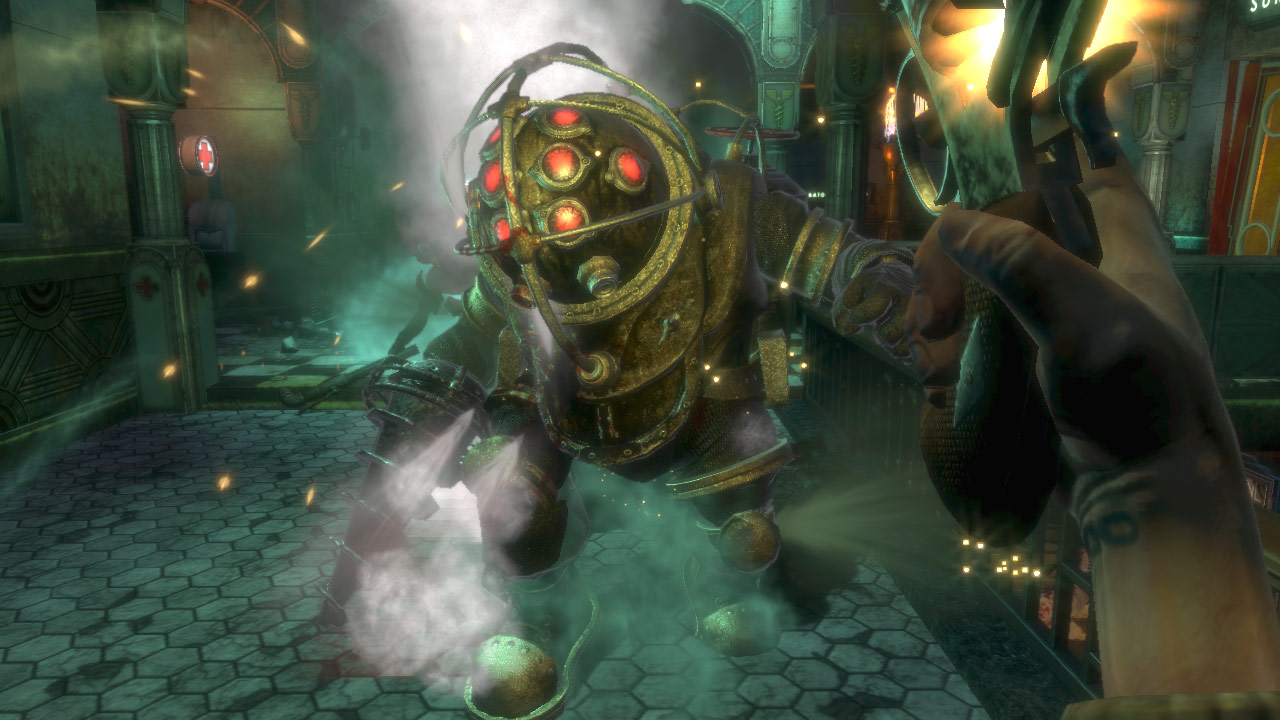
9. BioShock
It’s a shame that so much of the discussion over BioShock focussed overwhelmingly on its second-act twist, and how the third act couldn’t quite figure where to take the game afterwards, but look beyond the grandiose speeches and the Would You Kindlys and BioShock is still a stonkingly good game.
Twelve years on, Irrational’s incredible environment designs still hold up. Rapture may look a little grimier and more rubbery than we once remember it, but it’s still an incredible place to behold, an art-deco utopia that has been gutted on the inside by revolution, while slowly being crushed by the full weight of the ocean.
During play, BioShock is more action-oriented that most immersive sims, which is partly why it’s lower down on this list. But it does offer plenty of ways to get the edge on an opponent. Freeze them in place and smash them with a wrench, or distract them with a swarm of bees while you hack a nearby gun turret. One of my favourite approaches to combat was to temporarily posses a Big Daddy, and watch them wreak havoc on the local splicers.
BioShock is also largely responsible for propagating the ideas behind immersive sims into more mainstream experiences, the idea that your game doesn’t need to be an RPG to offer a more creative palette of skills and abilities. For that alone it deserves to be recognised on this list.
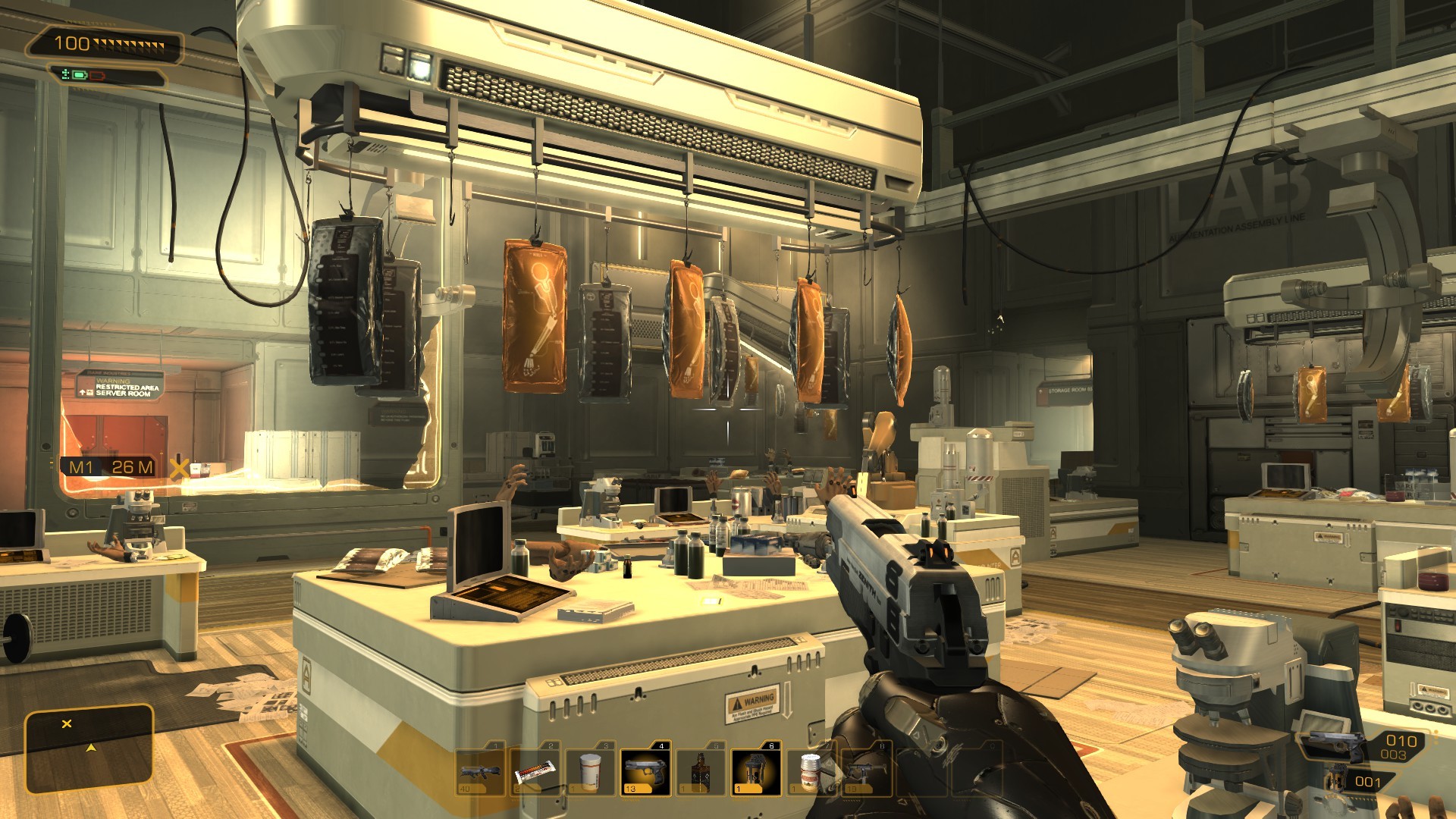
8. Deus Ex: Human Revolution
It’s weird to think I was once sceptical of Square Enix’ attempt to revitalise Deus Ex. A prequel? That isn’t going to work. A third-person cover system? Sacrilege! QTE-based kills and knockouts? Burn the heretic!
But not only did Square Enix succeed in holding its own, it made a game that, from a play perspective, was as good as the original Deus Ex, and in some ways even better. It provided a broader range of tactical options, larger and more interconnected hubs (including the stunning double-decker city of Hengsha) and a world that, despite being a prequel, somehow built upon the story of the original brilliantly.
Moreover, a lot of the new elements that seemed controversial at the time worked superbly. The third-person cover system made a lot of sense as did the quick-tap knockouts and executions. The only big mistakes the game really made were the entirely out-of-place boss battles, and the "choose-your-own-ending” finale.
The sequel, Mankind Divided, is pretty good as well, although it lacks the same scope of Human Revolution. We may not have asked for a prequel to Deus Ex, but I for one am glad we got one.
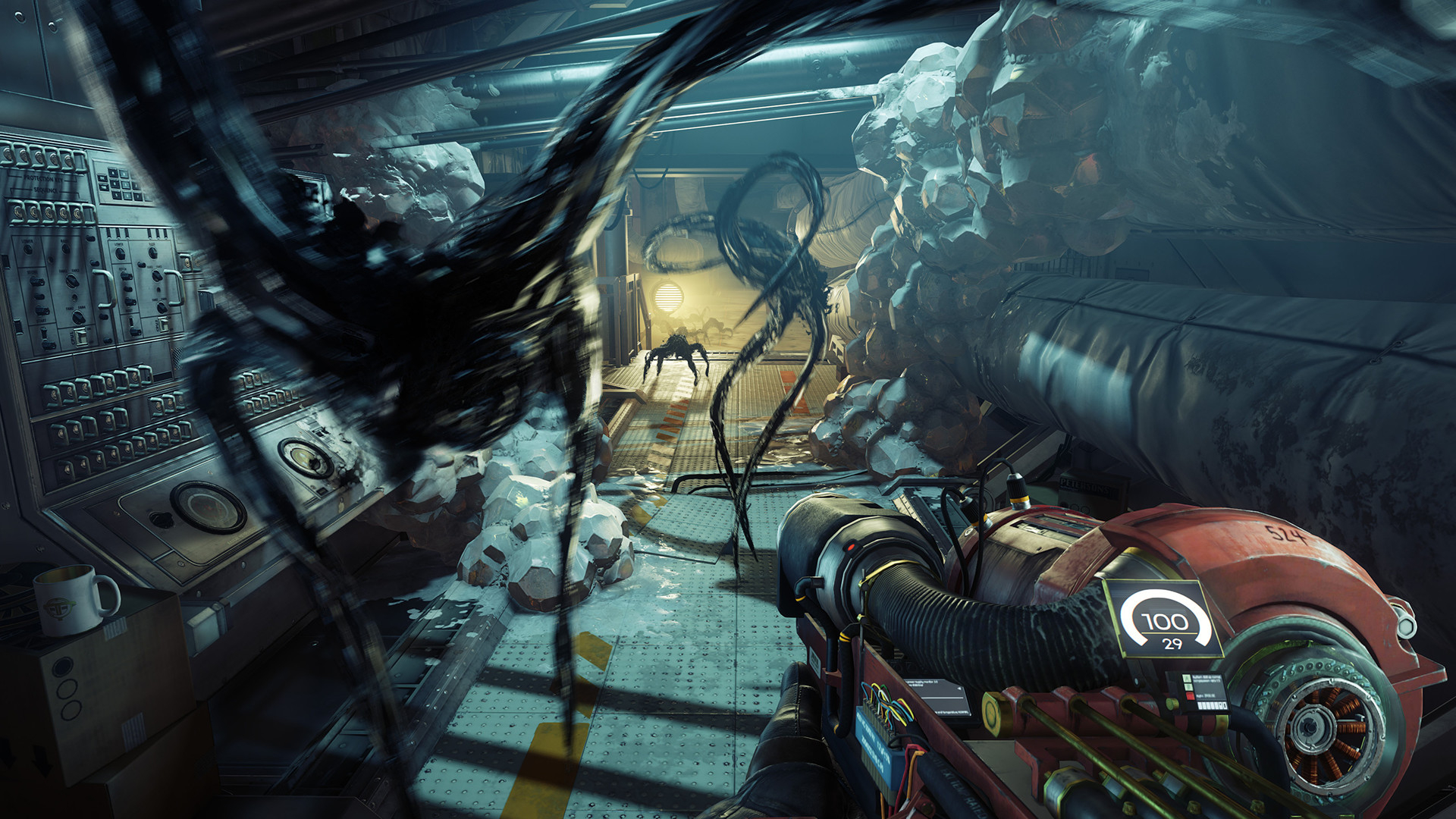
7. Prey
2017’s Prey didn’t quite get the reception it deserved, I think largely because Bethesda didn’t really know how to market the game until very late, which meant a lot of people weren’t entirely sure what to expect. As it turned out, Prey was a spiritual successor to System Shock, and a darned impressive one at that.
What I like most about Prey is how it embraces the Holy Quaternity of shoot, sneak, hack, and talk, but it tries to put its own distinctive spin on all these mechanics. You don’t just sneak by crouching, for example, you can turn yourself into an inanimate object to avoid detection. You can shoot enemies with a shotgun if you want, but you can also immobilise them with a giant glue launcher. Perhaps my favourite little gadget is the recycling grenade, which kills enemies by reducing them to their component atoms so that you can then use to craft new items. Brilliant!
There’s so much else going on in this game too. It has a superb sci-fi story that explores themes of memory and personal identity. Meanwhile, the setting of the Talos 1 space-station is a massive and complex environment with wonderful art-deco styling, alongside some superb spatial puzzling that often involves venturing outside the station to access new areas. It even lets you create your own side-missions by tagging every NPC (alive or dead) with a location device that let you track them down throughout the station.
Prey is a hugely clever and atmospheric game, let down only by the fact that its combat is a bit lumpy, and a steep learning curve that makes the early game quite daunting. Nonetheless, its a rich and satisfying sci-fi adventure that’s well worth your time.
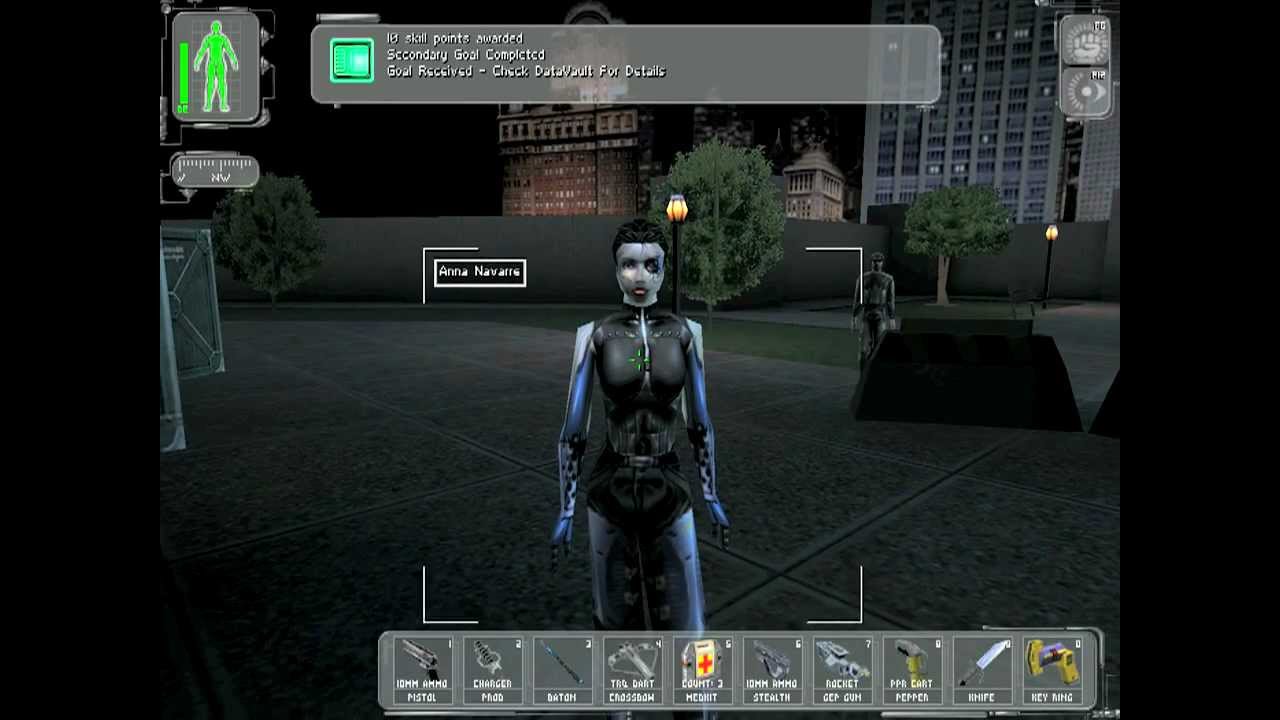
6. Deus Ex
I’ve seen several people over the last few years say that Deus Ex has not aged particularly well, which I think is a little bit unfair. Whereas most immersive sims up to that point had used sci-fi or fantasy settings, Deus Ex was the first game of its type to use a real-world, almost-contemporary scenario. As such, it was bound up in a lot of the technological and political anxieties of the time. Spector’s own brief for the story was, 'What if every conspiracy theory in existence was true?'
Looking back now, yes, it does look a bit like a mashup of The X-Files and The Matrix. But the game itself remains extremely playable. It sports a truly enormous player toolkit, from cybernetic augmentations to player skills, to an inventory with upgradeable weapons and equipment. You can turn yourself into a human tank, a cybernetically enhanced ninja, or a computer hacking machine.
And while the story may seem distinctly nineties in tone, that doesn’t stop it from being a huge and thrilling spy adventure that takes you from the dark streets of Hell’s Kitchen to the night market of Hong Kong and beyond. There are security complexes, secret research facilities, and even an underwater laboratory to explore. There are narrative choices that can dramatically alter how your story progresses, and let you solve problems through non-violent means. Deus Ex may no longer be the high-watermark for immersive sims, but it is and always will be the game that set the template for what an immersive sim is.
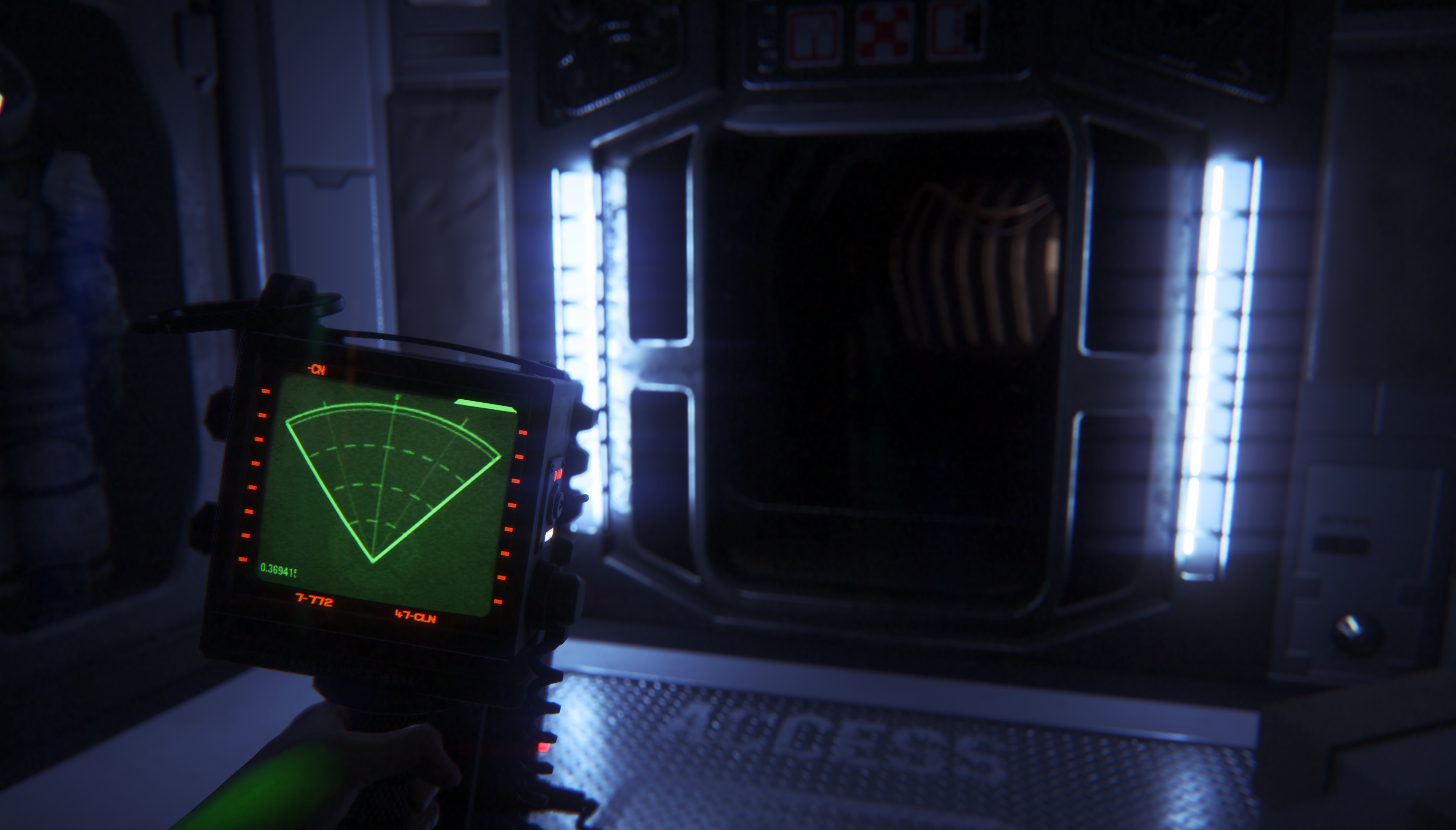
5. Alien: Isolation
Feel free to debate this one, but Alien: Isolation is one of the most immersive simulations I’ve ever played. I’m not particularly scared of the Xenomorph, because it’s a 40-year-old rubber monster, an icon of terror that has become a toy for children. I love the films (well, two of them), and I watch Alien at least once a year, but I do so because I love the atmosphere and the set design and the characters, not because I find it scary.
Alien: Isolation made me fear the Xenomorph in a way that the films never managed, because it puts you in a room with that monster and then gives it a brain. The dynamic systems that make up the Xenomorph’s AI is 100 percent in the immersive-sim mould. In fact, you could almost argue that Isolation is reverse-immersive sim, where the Xenomorph is the Garrett/JC Denton-style infiltrator and you’re just one of the dumb guards in its way.
Even if you don’t accept my pretentious ponderings, there’s plenty of immersive-sim DNA in here, from the exquisitely detailed, semi-open levels and the powerful sense of place, to the weapons and equipment you can use to solve the game’s environmental problems.
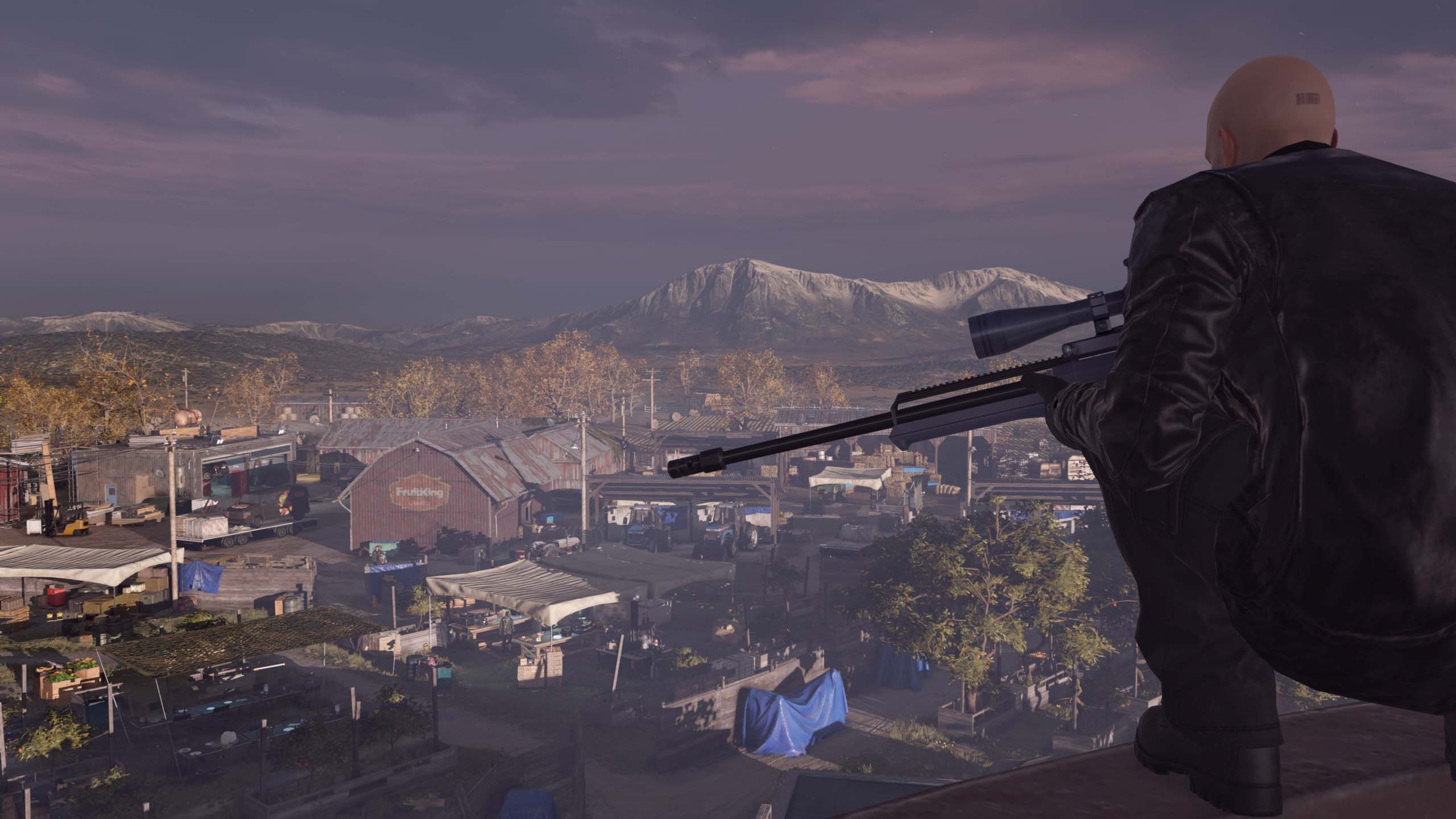
4. Hitman
Simulations don’t come much more immersive than Hitman’s incredible assassination sandboxes. Each of Hitman’s missions is a meticulously crafted little puzzle box that has countless different ways of solving it.
Indeed, Hitman actively encourages players to experiment with its levels more than any other games on this list. Each mission is treated as a separate entity with around a half-dozen different storylines that take multiple attempts to explore. On top of that, it provides a constant drip-feed of new equipment that encourage you to play with the simulation in different ways, alongside environmental opportunities to create your own murderous solution.
HITMAN doesn’t have the same narrative or aesthetic aspirations of other immersive sims. It is neither as stylish as Dishonored nor as meditative as Prey (although its environments are phenomenally intricate), while its storytelling swerves between being inconsequential and downright bamboozling. But as a coldly cerebral murder-sim brimming with detail, it’s one of the best examples out there.
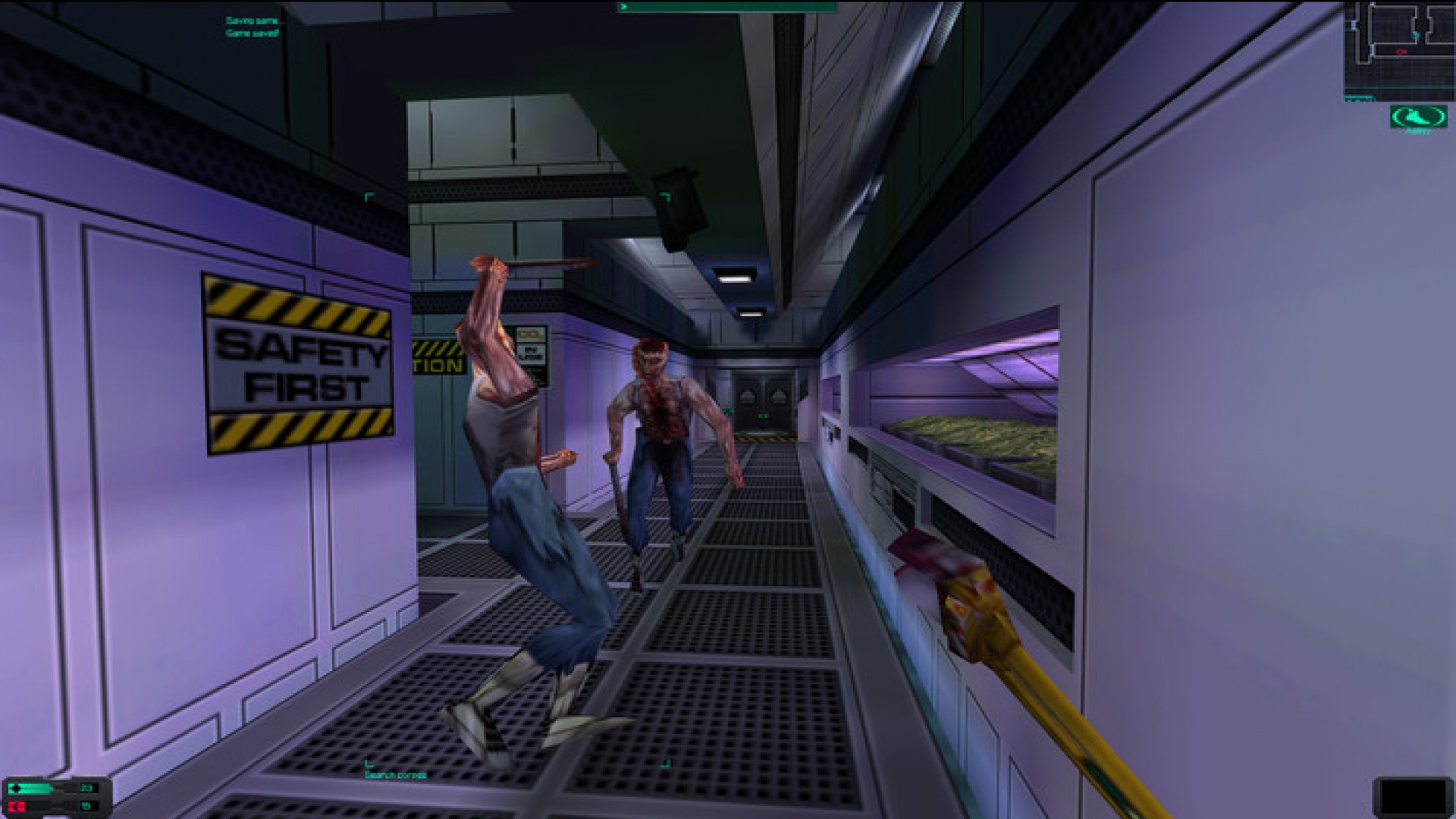
3. System Shock 2
If it wasn’t for the huge success of Deus Ex, I think more people would look back at System Shock 2 as the standard-setter for immersive sims. This game has a truly huge number of systems running beneath its belt, from thee distinct skill-trees framed around firearms, technological affinity, and psionic powers, to a neophyte crafting system that lets you combine certain chemical elements to create new items.
But what makes System Shock 2 so special is how weird it is. Made partly by the same designers as Thief, its setting of the spaceship Von Braun bears a similarly eerie atmosphere, where a parasitic alien hivemind is at war with the evil queen of Cyberspace, the almighty SHODAN.
In many ways System Shock 2 is an anti-immersive sim. Most games of its ilk emphasise how much control you have over situations. But System Shock 2’s main theme is how little control you have over things. This is perhaps unsurprising considering it was written by Ken Levine, the lead designer of BioShock. Yet whereas BioShock packs all of its narrative heft into one moment, System Shock 2 layers its message through the entirety of its experience. The abundance of choice it offers in approach also means there are myriad ways to screw yourself over (and System Shock 2 will find the gap in your armour), while all of your upgrade points are given to you by SHODAN herself, who forces you into an uneasy alliance as you try to defeat the hivemind of the Many.
It’s deviously clever both thematically and mechanically, while its terrifying atmosphere will worm its way into your brain like one of the Many’s parasites.

2. Metal Gear Solid V: The Phantom Pain
It still frustrates me that so much of the conversation around MGS V on launch revolved around grumbles about its story. Metal Gear Solid 4 was basically an entire game dedicated to ending the Metal Gear story. The Phantom Pain, by comparison, wasn’t so much about filling in the gaps as it was creating your own Metal Gear stories.
To that end, it has one of the richest mechanical toolkits available in one of the most reactive worlds ever designed. The whole game is built around planning and executing your own tactical espionage missions, letting you choose your infiltration method, your initial drop-point, your in-mission companion, your starting vehicle (if you want one), your weapons, and your gadgets, which include things like an inflatable decoy of yourself. You can even call in several types of artillery support. It’s absolutely crammed with stuff.
What makes The Phantom Pain truly special is not so much the options that are available to you, but how your enemies react to your play-style. If you play as a sniper who likes to pop heads, it won’t be long until your enemies start wearing helmets. If you like to ambush a patrol with tear-gas and then run in to knock them all out, they’ll start wearing gasmasks. If you use the decoy a lot to distract your opponents, they will start planting decoys in their own bases.
The Phantom Pain is genuinely one of the most impressively dynamic games I’ve ever played, an amazingly complex story machine that is capable of surprising you across dozens of hours of play. The way it brings all of this different systems together and makes them work is nothing short of remarkable.
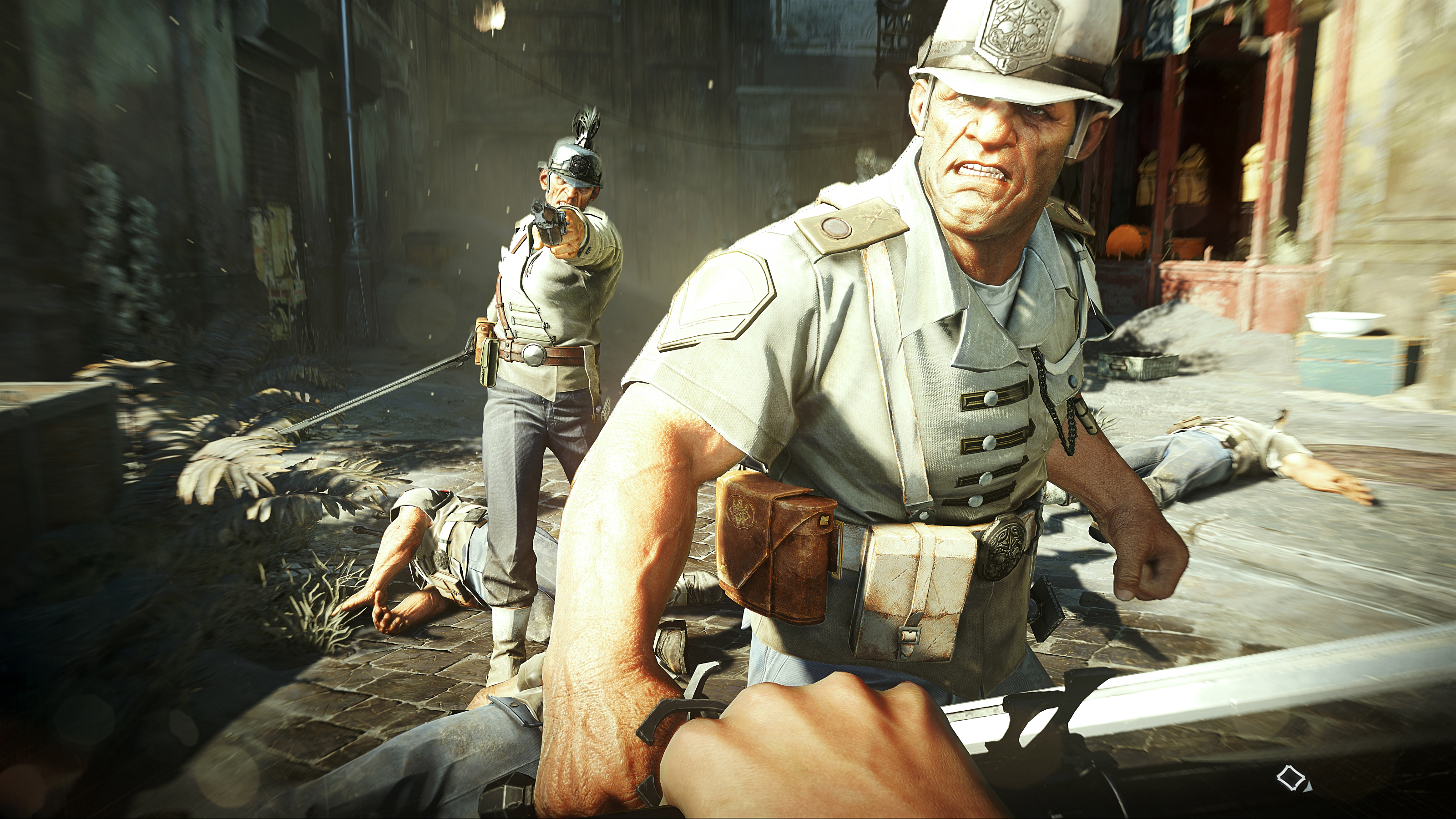
1. Dishonored/Dishonored 2
I simply couldn’t choose between my two favourite children, and frankly I don’t think I have to. Both Dishonored games are equally excellent, and you need to play both to get the full story experience.
It’s hard to quantify what makes the Dishonored games so good, mainly because the answer is “everything”. Dishonored boasts a unique and wonderfully distinctive art-style, top-tier writing and voice acting, and some of the best world-building of any game (the developers spent two years just mapping out the world). It’s just incredibly well made in almost every single aspect.
Despite this, there are two areas where Dishonored’s brilliance shines particularly brightly. The first is the creative toolset the game offers you, particularly your magical Outsider powers. The ability to slow down time, possess your enemies, and link their fates together using Domino enables countless ways to deal with your opponents, while Blink and Far Reach are positively revolutionary in terms of how they alter your ability to traverse the world. What’s more, all of Dishonored's systems have an astonishing amount of granularity built into them. I’ve played Dishonored II three times, for example, and on my third playthrough I discovered a whole new way to knock enemies out by slide-tackling them.
The other area where Dishonored stands out are its 3D environments. Dishonored’s level design is heavily inspired by Thief, but it uses modern tech to take those design ideas to whole new heights. Some of these, such as Clockwork Mansion and Lady Boyle’s Manor, dazzle with their spectacle and inventiveness. But almost every mission in the Dishonored games, be it the first game’s Golden Cat or the second’s Royal Conservatory, would be considered the highlight of any other game. That’s not to mention the exquisite city sections, which allow you to get a slice of urban life as you make your way to the mission proper.
Everything about these games is great. Even the DLC is superb, particularly the two Daud instalments for the original. If you haven’t played them yet, you should definitely consider investing in both, as they’re two of the most stylish, distinctive, and detailed games ever made.

MSI MPG Velox 100R Chassis Review
October 14 2021 | 15:04



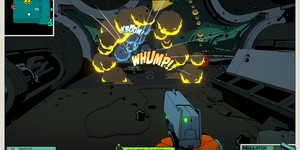





Want to comment? Please log in.